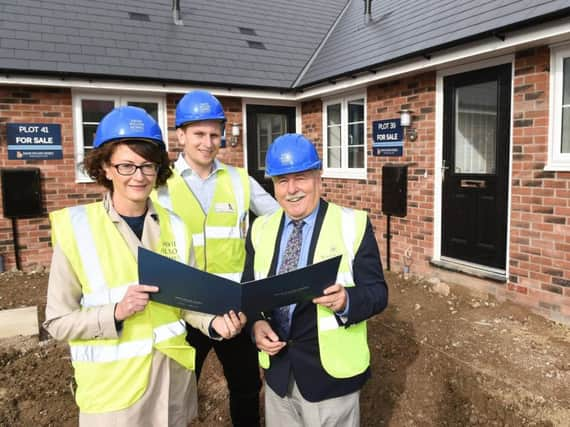New levy will ensure developers pay


The move would ensure they give something back to the local community after building new homes in the Ribble Valley.
Leader of Ribble Valley Borough Council Coun. Ken Hind said: “All governments of all persuasions have been putting pressure on local authorities to meet the growing housing crisis.
Advertisement
Hide AdAdvertisement
Hide AdRibble Valley has a problem in that developers want to build here as houses are easier to sell. There are many good schools, low crime, beautiful scenery and a good quality of life.
“They have less interest in Hyndburn, Burnley and Blackburn. They want to build on green fields and not on brownfield sites of which Ribble Valley has very few.
“The industrial towns of East Lancashire have the infrastructure, but low demand for housing and we are the opposite, high demand with groaning infrastructure.”
Coun. Hind added: “Due to the existence of the Area of Outstanding Natural Beauty in the Trough of Bowland and Pendle Hill covering 80% of the Ribble Valley, a huge proportion of the borough development is restricted to the A59 corridor and Longridge.”
Advertisement
Hide AdAdvertisement
Hide AdThe council’s solution is to look at the Community Infrastructure Levy which would demand that every developer pays a fixed sum per square metre over 100 square metres per house with affordable homes excluded.
“Every resident can then see transparently the amounts of money contributed to school places, roads, pavements, parks and other public assets,” said Coun. Hind.
“It means they can question where this money is being spent. Areas like Longridge, which are due to finalise the Neighbourhood Plan, will find 25% of CIL is paid to the local town council when developments are built in the town to be spent on local public facilities and infrastructure. If Clitheroe Town Council created a Neighbourhood plan it would also answer the concerns of Clitheroe residents who are anxious that under the present system they cannot see where money paid by developers designated for school places and infrastructure is being spent.”
Chairman of the council’s planning committee Coun. Alison Brown added: “We have appointed consultants – Infusion – to advise us on the advantages and disadvantages of adopting CIL which will be considered by the planning committee and included in the future reviews of our development plan if adopted.”
Advertisement
Hide AdAdvertisement
Hide AdHowever, David Hinder, secretary of Ribble Valley Labour Party, said the borough’s Tory administration had only itself to blame for many of the problems after taking too long to develop its “core strategy” for development, finally approved in December 2014.
Mr Hinder said: “We have been urging the council to use the levy for more than two years so they are a bit late. Our manifesto in 2015 called for the immediate implementation of the infrastructure levy. The Tory administration has been delinquent realising this in 2018.
“Their delays in producing a viable Core Strategy have contributed to these problems.”
And Steve Rush, chairman of Clitheroe Residents’ Action Group, said: “As the CIL will not affect existing developers this smacks of ‘after the horse has bolted’. Talk of a reduction in future house building is nonsense.
Advertisement
Hide AdAdvertisement
Hide Ad“We have already exceed our 20 year target by 356, rendering the Core Strategy useless. Currently developers contribute to society via Section 106 agreements, but unfortunately the money is never spent in areas it was intended for.”
Coun. Hind added: “The October 2017 figures for planning consents granted by RVBC show that in the period of the Core Strategy Development Plan since 2008, 2,011 houses have been created or completed, permissions for a total of 3,945 homes granted planning consent and 445 are currently under construction. To date, RVBC have granted a total of 5,956 planning consents in the Development Plan period to 2028 which includes the completed homes.
“The council has development proposals covering the next five years meeting the requirement to have a five year land supply. The market is in danger of being saturated in particular in Whalley, Clitheroe and Longridge, the main urban centres where it is difficult to show a need except for retirement bungalows and rented accommodation. In some of our rural villages there is an argument for small developments including affordable homes which will help to sustain the villages, keeping open the shops, pubs, schools and community halls.
“In parallel with considering CIL the council is about to review the Development Plan as part of a five year review.
Advertisement
Hide AdAdvertisement
Hide Ad“We will consider a reduction in annual house building in the Ribble Valley from a minimum of 280 to 172 a year proposed by the Government put forward in a consultation which we have already supported.
“This recognises that RVBC is making major progress in meeting housing need which has resulted in 300 houses a year being constructed for the last three years including between 80 to 90 affordable homes per year. These are homes sold at 30% discount or rented homes or in part ownership.”